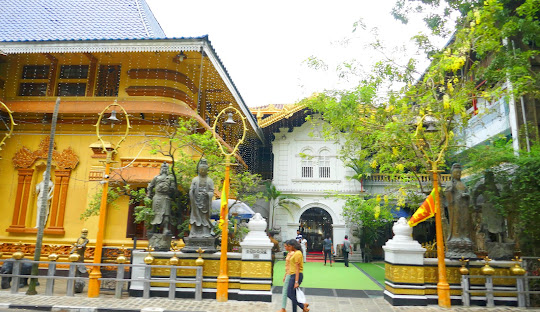Colombo, Sri Lanka
🌴 Colombo, Sri Lanka – The Gateway to the Island’s Soul
Overview:
Colombo, the vibrant capital of Sri Lanka, is a captivating fusion of old-world charm and modern dynamism. Stretching along the Indian Ocean, the city offers colonial architecture, colorful markets, lush parks, buzzing tuk-tuks, serene Buddhist temples, and a rich culinary landscape. While often treated as a stopover, Colombo is a destination in its own right—an energetic introduction to the island’s history, culture, and rhythm.
🌟 Top Attractions in Colombo
-
Galle Face Green: A sunset hotspot for locals and visitors alike. Sample street food like isso wade (shrimp fritters) as the Indian Ocean breeze rolls in.
-
Gangaramaya Temple: A mix of Buddhist, Hindu, and Chinese architecture with a remarkable collection of statues and relics.
-
National Museum of Colombo: Housed in a grand white building, this museum chronicles Sri Lanka’s cultural and political history.
-
Colombo Dutch Hospital Precinct: A beautifully restored colonial-era hospital, now home to chic cafes, boutiques, and restaurants.
-
Independence Memorial Hall: A stately monument commemorating Sri Lanka’s independence from Britain in 1948.
-
Pettah Market: Colombo’s chaotic, colorful commercial heart—perfect for bargain hunters and photographers.
-
Lotus Tower: One of South Asia’s tallest structures—offering panoramic views of the city skyline.
🍛 What to Eat in Colombo
-
Kottu Roti: The city's ultimate street food—chopped flatbread stir-fried with vegetables, eggs, and meat.
-
Hoppers (Appa): Bowl-shaped crepes made with fermented rice batter—often enjoyed with egg or coconut sambol.
-
Lamprais: A Dutch-Burgher specialty—rice, meat, and sambol wrapped in banana leaves and baked.
-
Crab Curry: Try this spicy delicacy at Ministry of Crab, a world-renowned seafood restaurant.
-
Buffet-Style Rice & Curry: Many locals enjoy lunch this way—at humble eateries like Green Cabin or Upali’s.
🏨 Where to Stay
-
Luxury: Shangri-La Colombo – Ocean views, chic dining, and upscale elegance in the city center.
-
Mid-Range: Cinnamon Red – Trendy, affordable, and rooftop-pool-equipped.
-
Budget: Clock Inn Colombo – Clean, social, and centrally located, ideal for solo travelers.
📅 Best Time to Visit
-
December to March: Ideal weather with sunny skies and low humidity—perfect for sightseeing.
-
July–September: Drier period on the west coast with fewer crowds.
-
Avoid May & October: Inter-monsoon rains can be unpredictable.
🎭 Local Culture & Events
-
Navam Perahera (February): A spectacular parade of elephants, dancers, and drummers around Gangaramaya Temple.
-
Vesak (May): Celebrates Buddha’s birth, enlightenment, and death with illuminated lanterns, decorations, and free food stalls.
-
Colombo Art Biennale: A showcase of contemporary art, both local and international.
💡 Travel Tips
-
Tuk-tuks: Use a metered tuk-tuk or ride-sharing app like PickMe for transparency and affordability.
-
Dress Modestly: Especially when visiting temples—shoulders and knees should be covered.
-
Language: English is widely spoken, but basic Sinhala or Tamil phrases are appreciated.
-
Currency: Carry cash for markets and local eateries; cards are accepted in most modern establishments.
📸 Best Photo Spots
-
Galle Face Green at Sunset: Capture the warm glow over the ocean and kites flying in the breeze.
-
Old Parliament Building: A neoclassical beauty along the coastal promenade.
-
Gangaramaya Lake Temple: Serene and photogenic at dawn or dusk.
-
Colombo Fort Railway Station: A colonial relic bustling with daily life.


